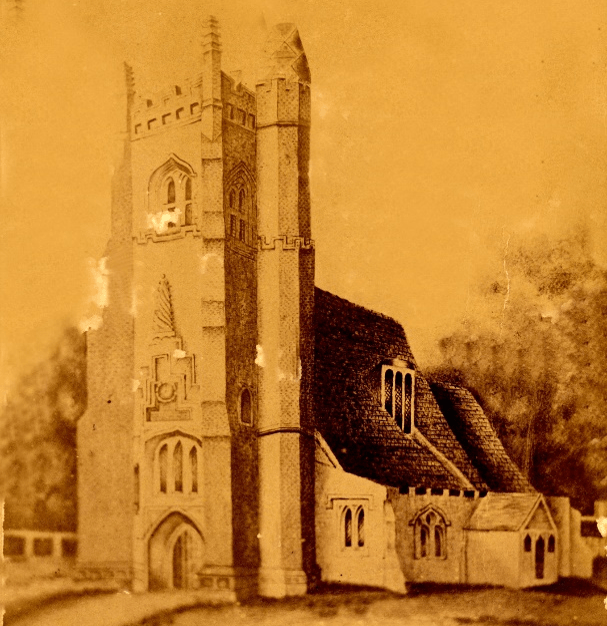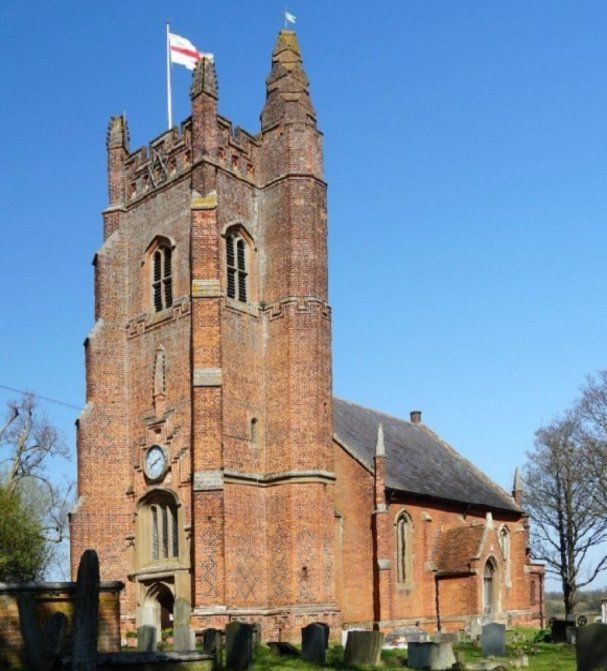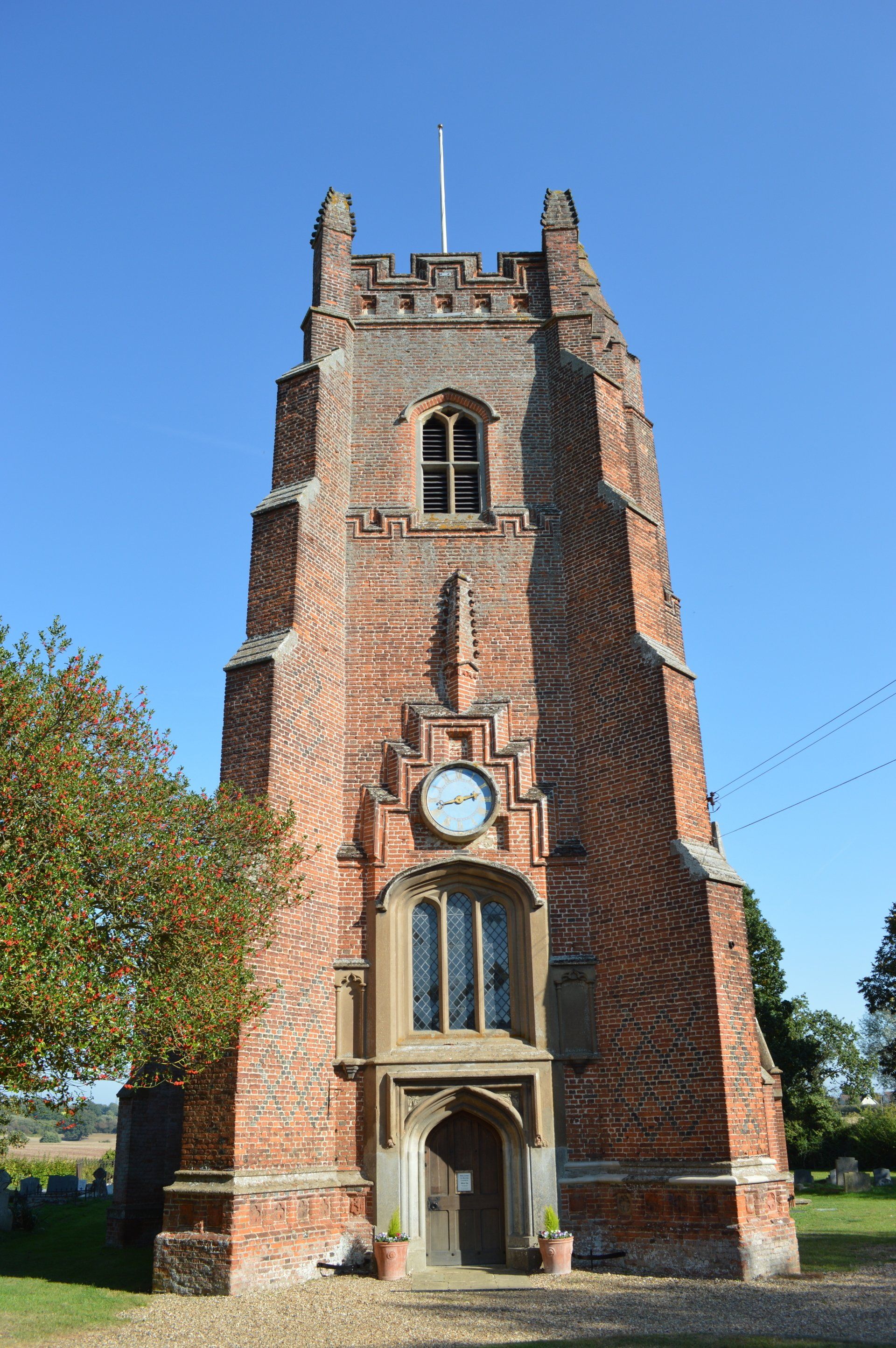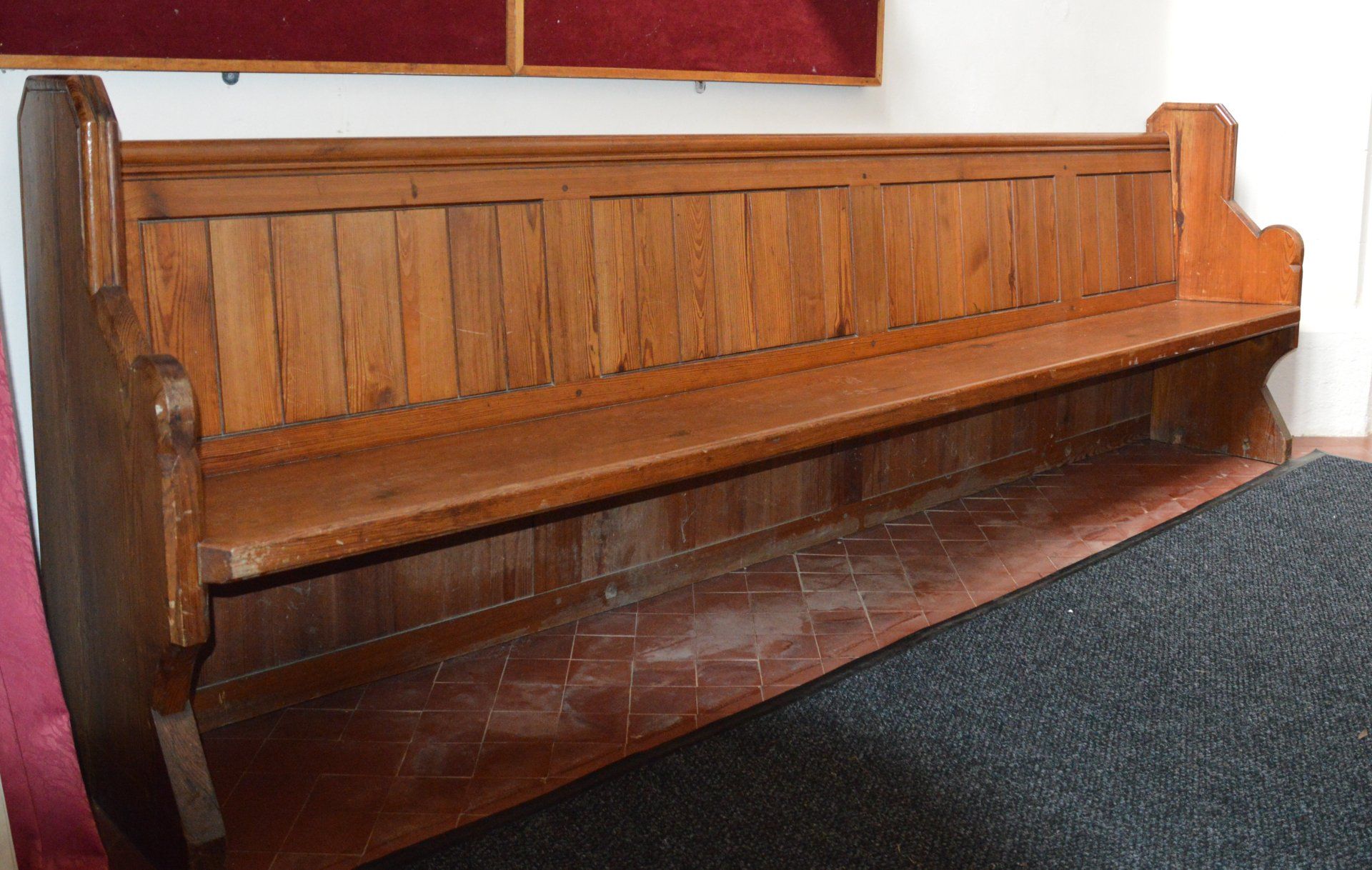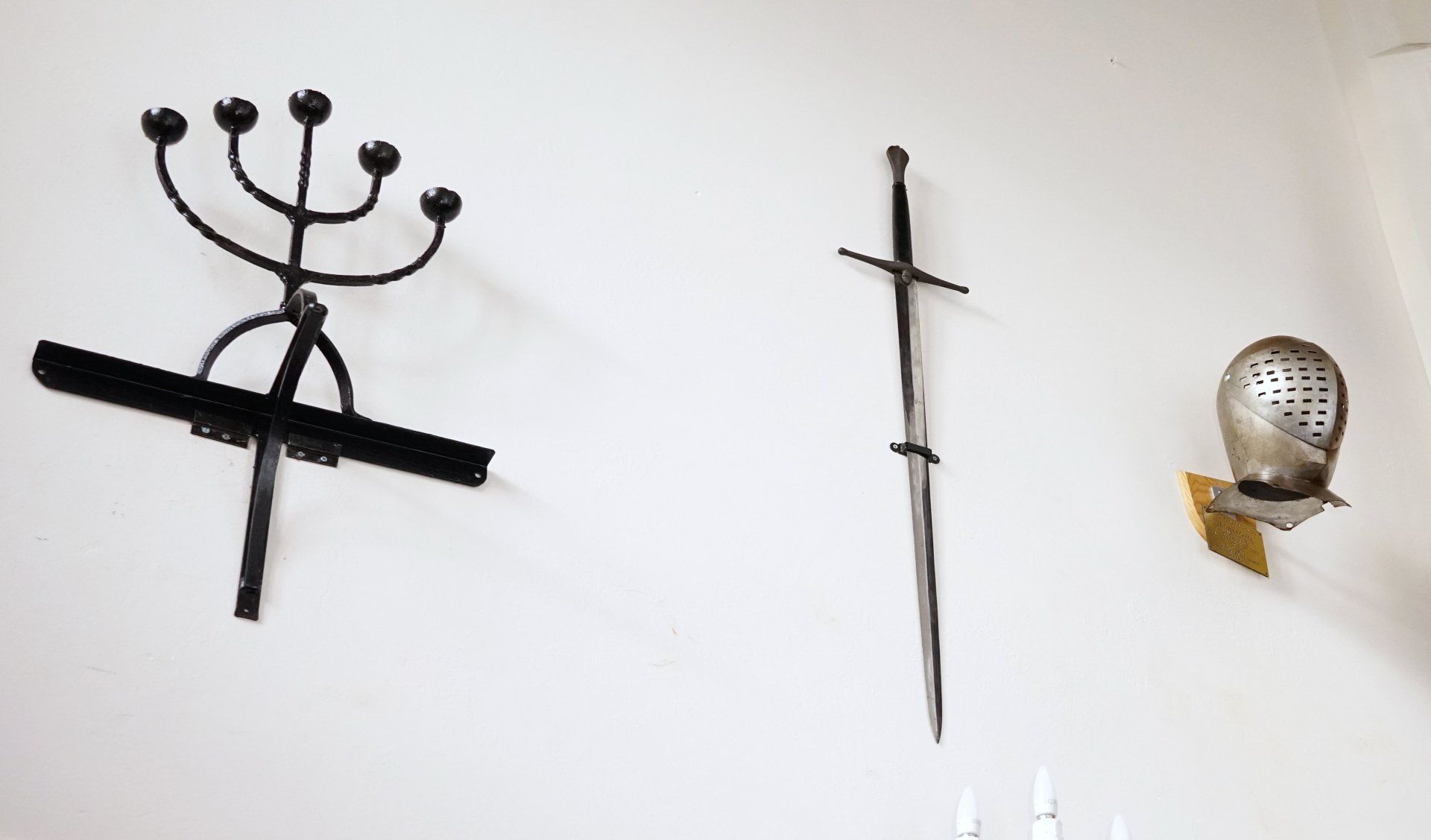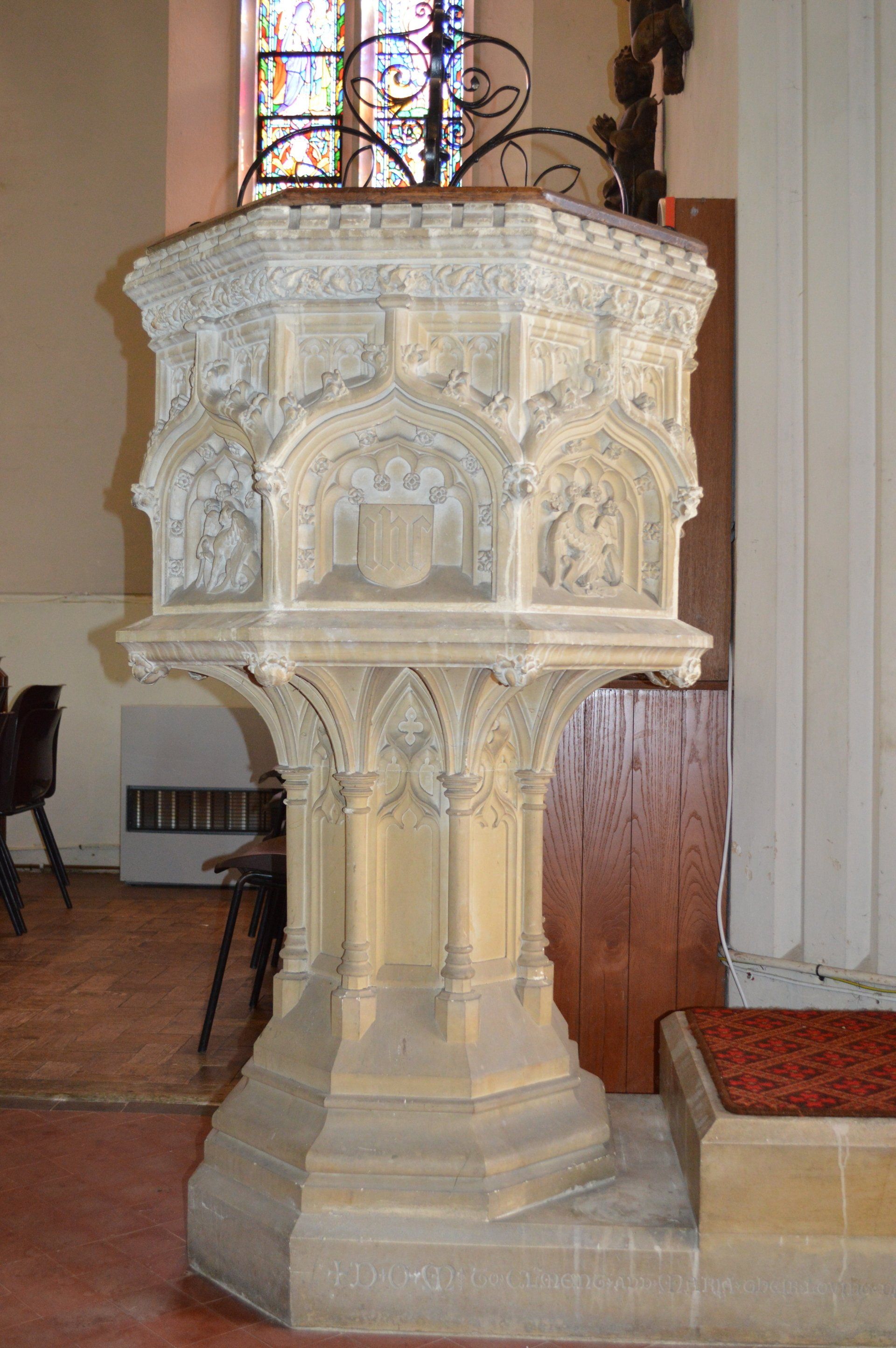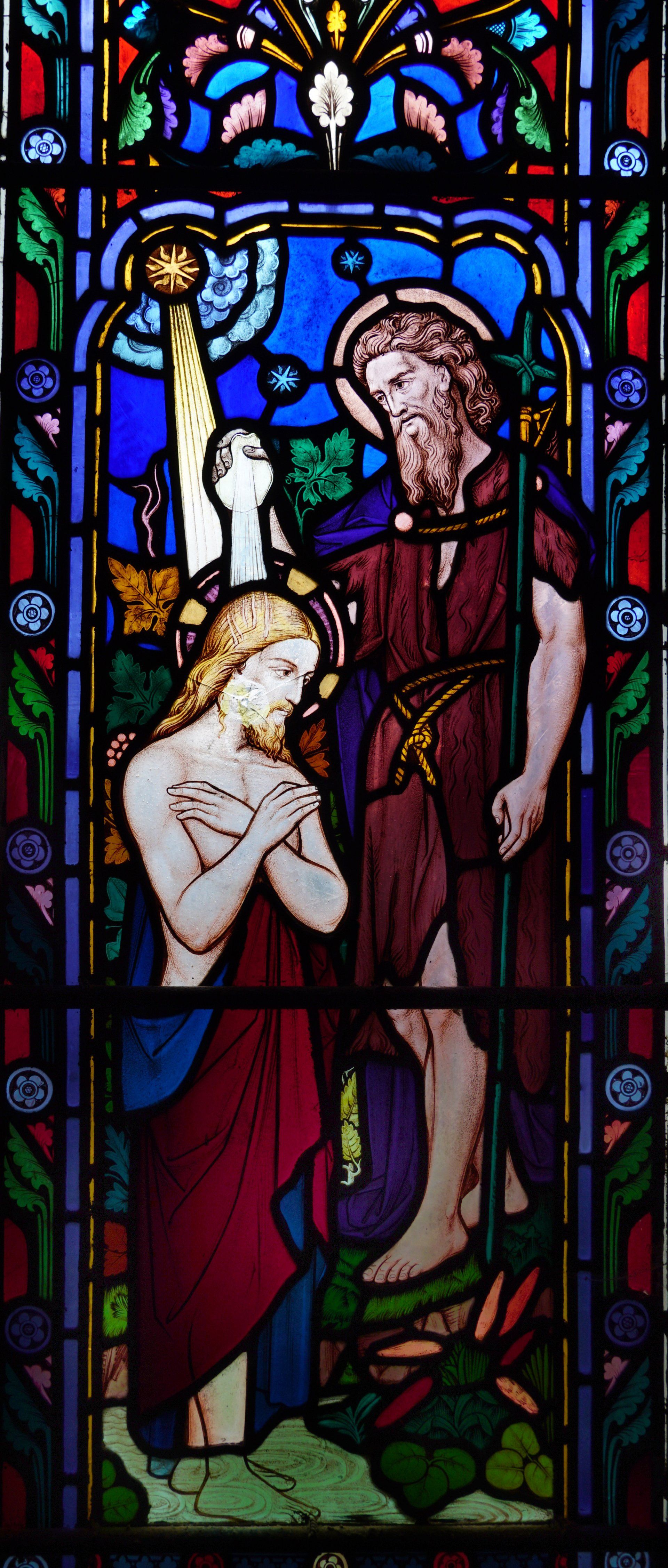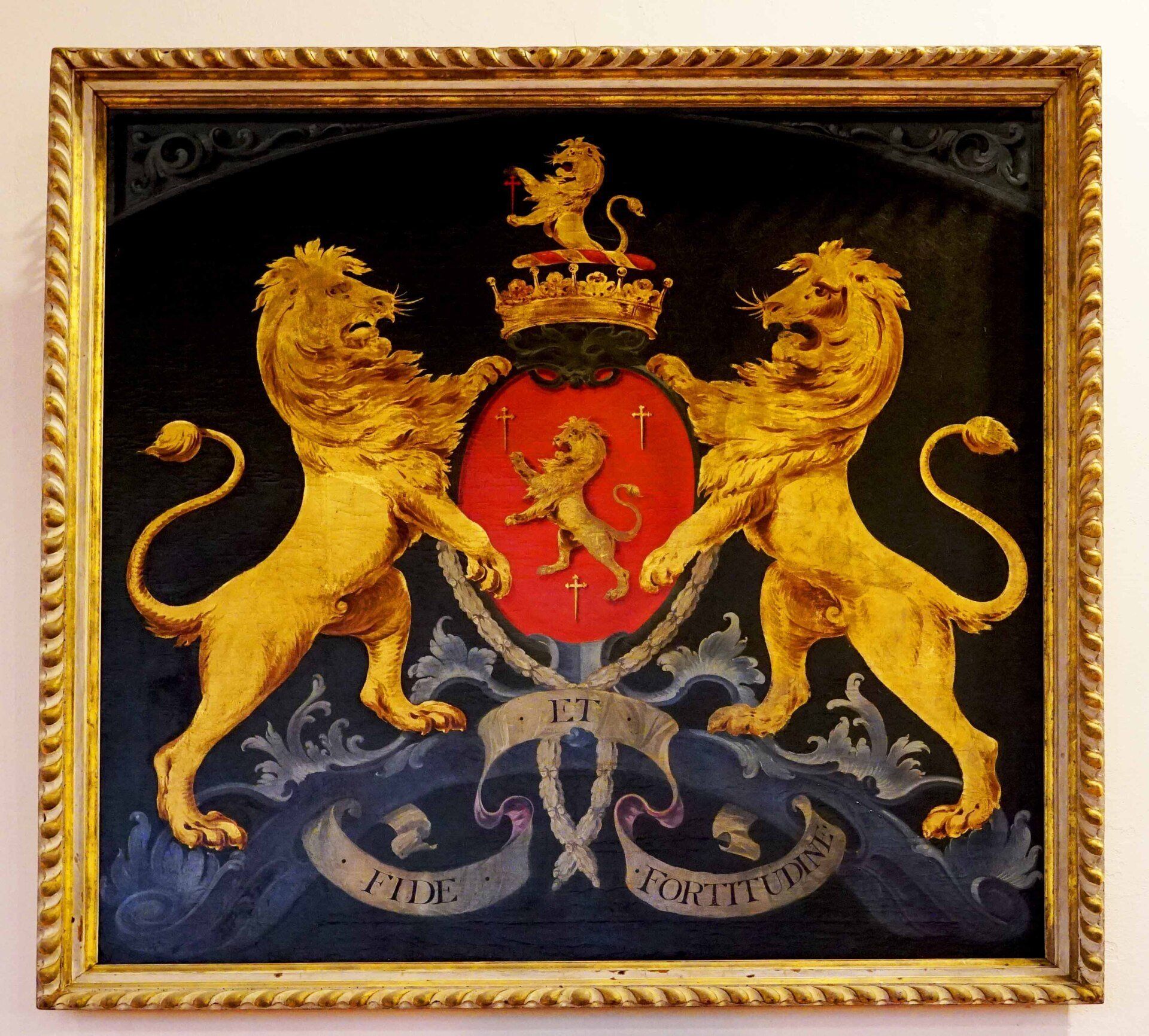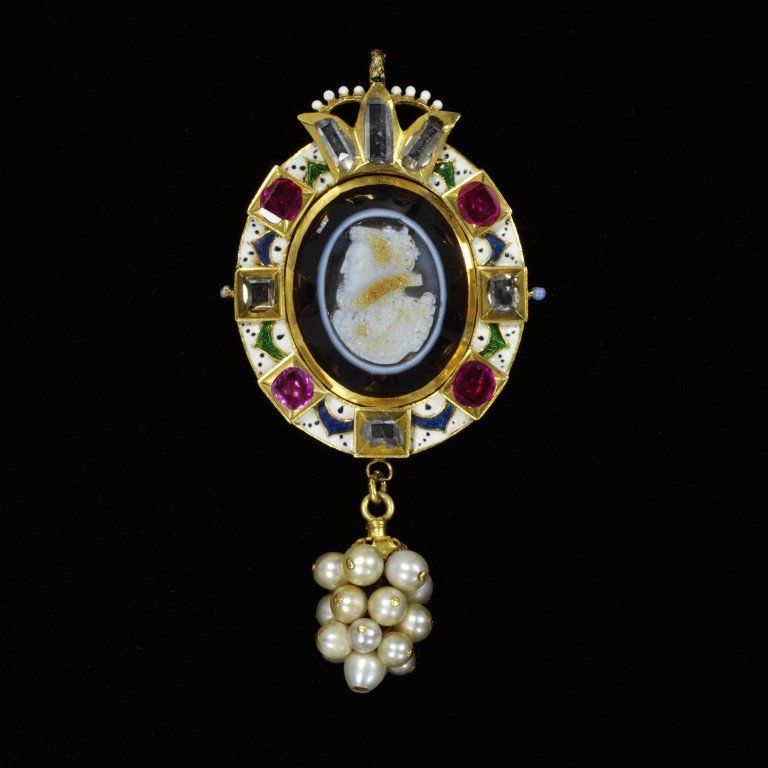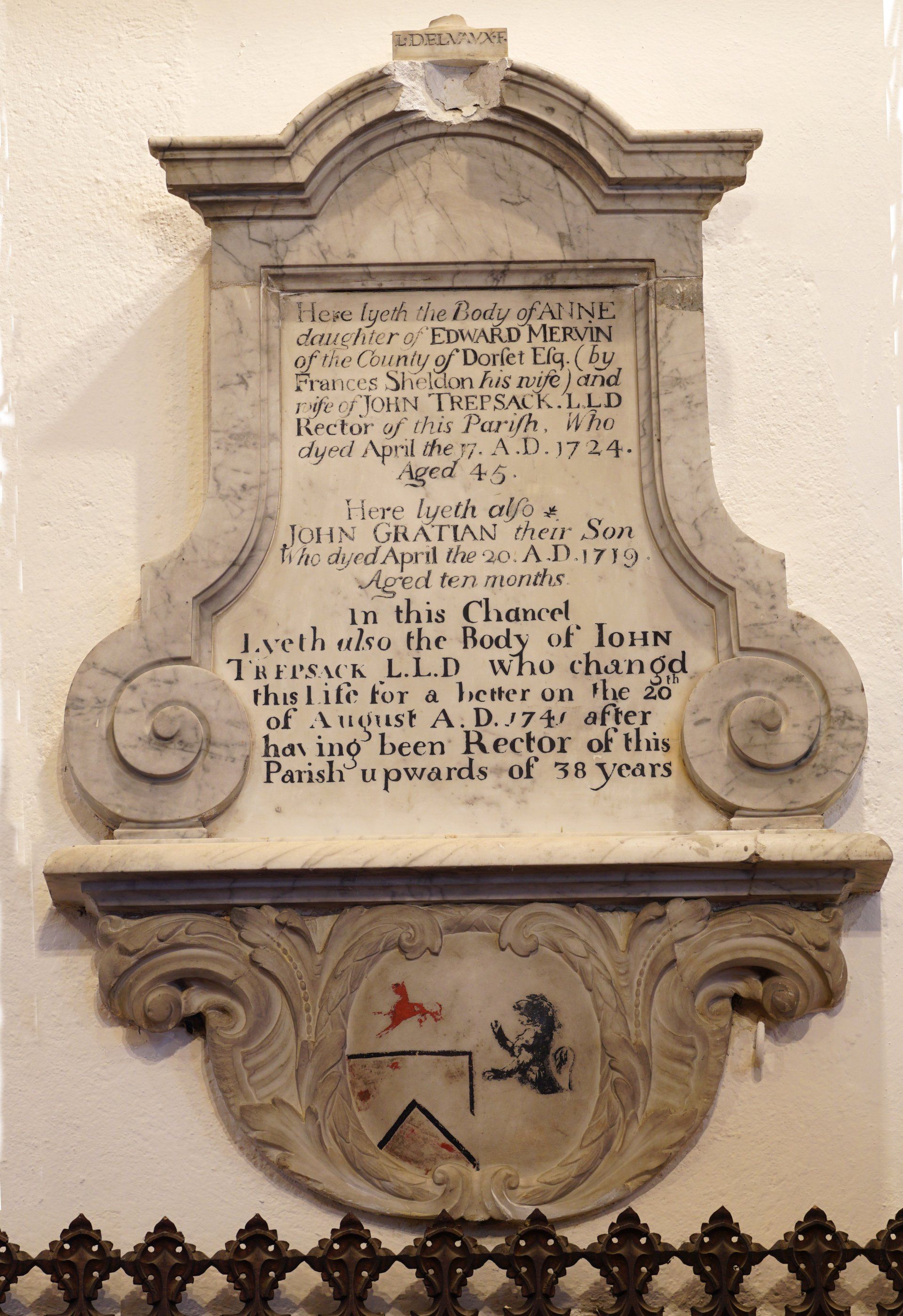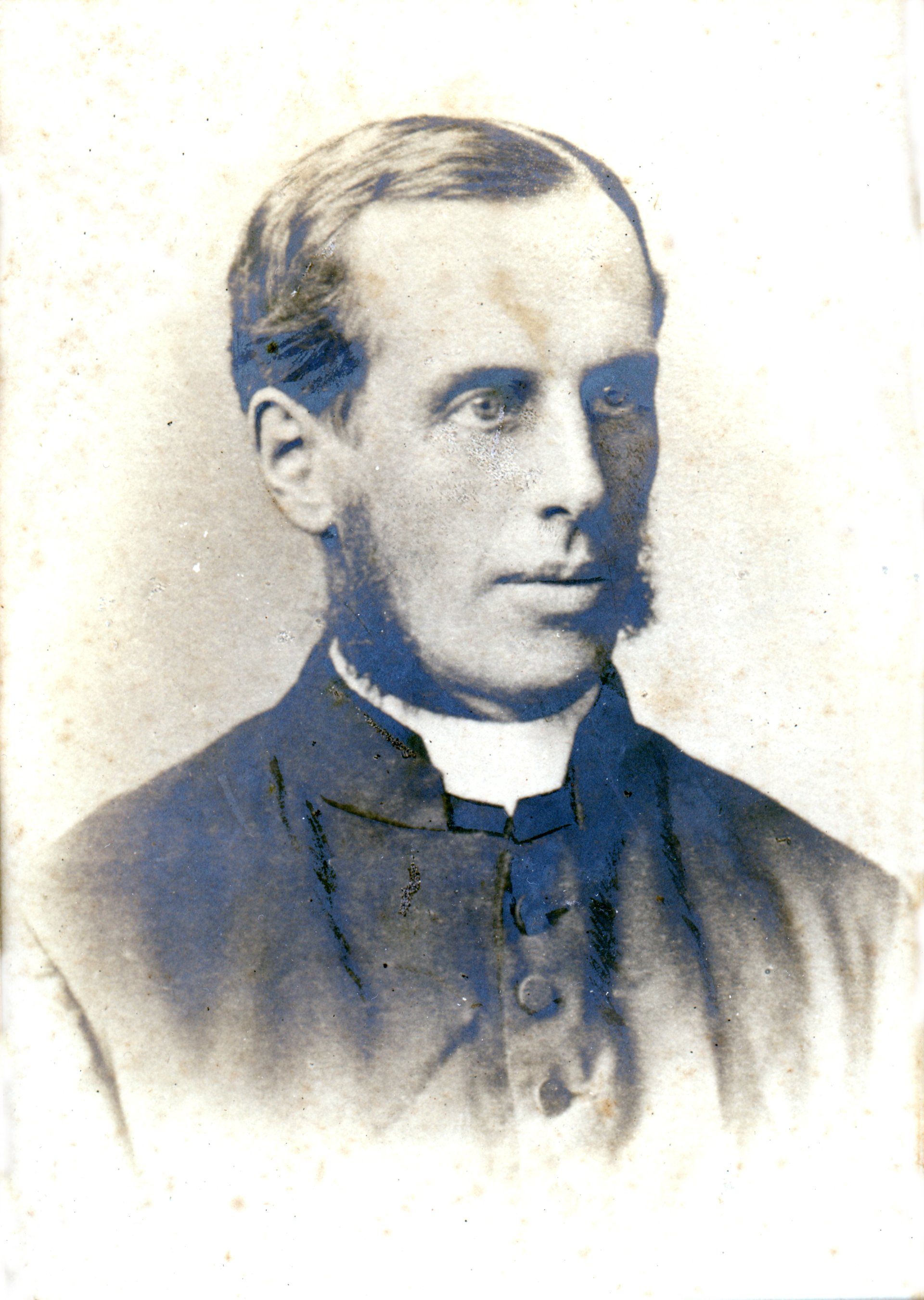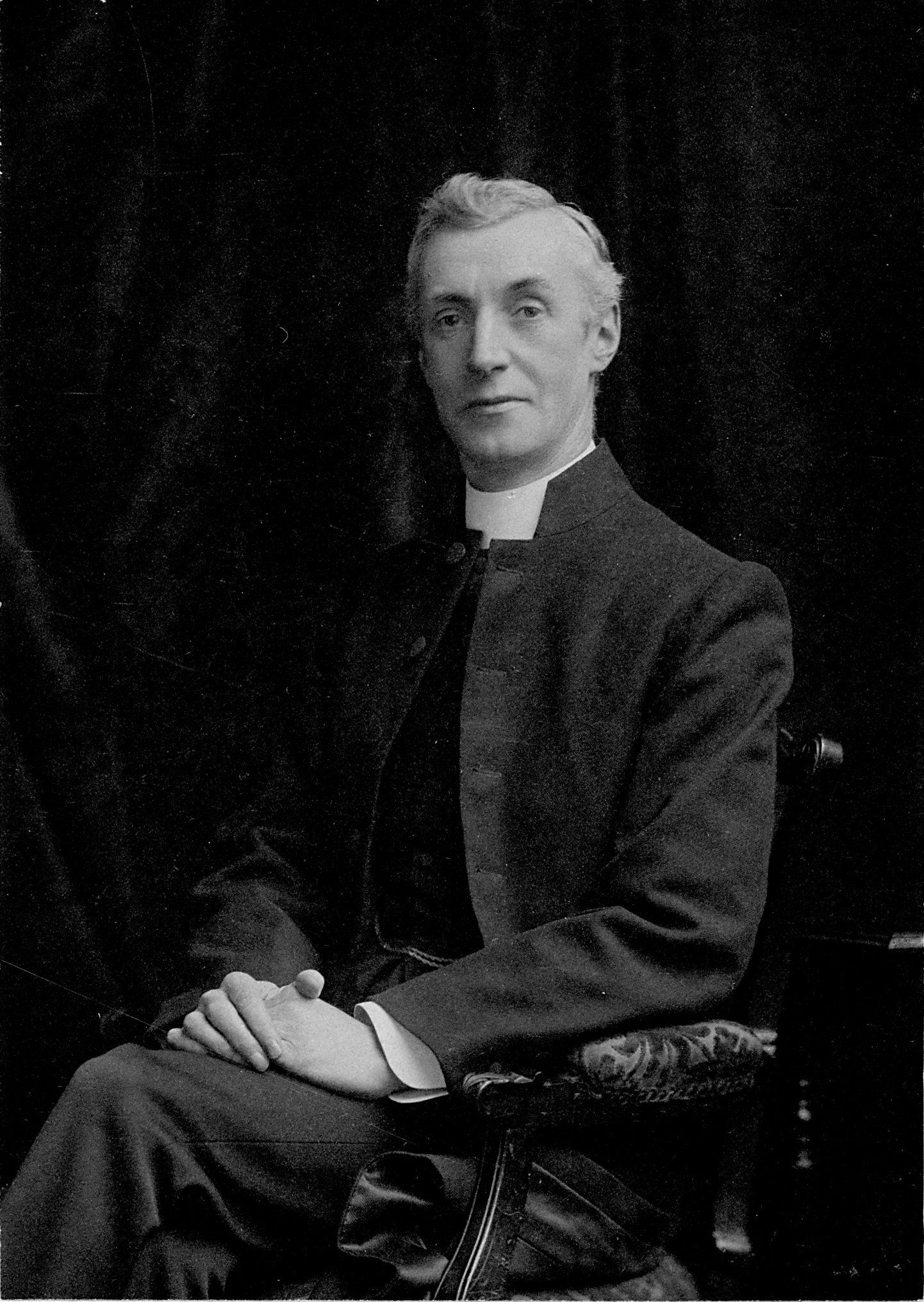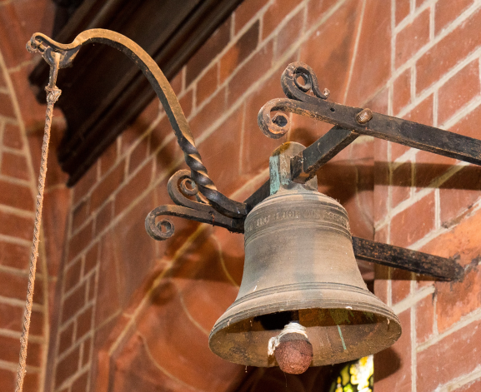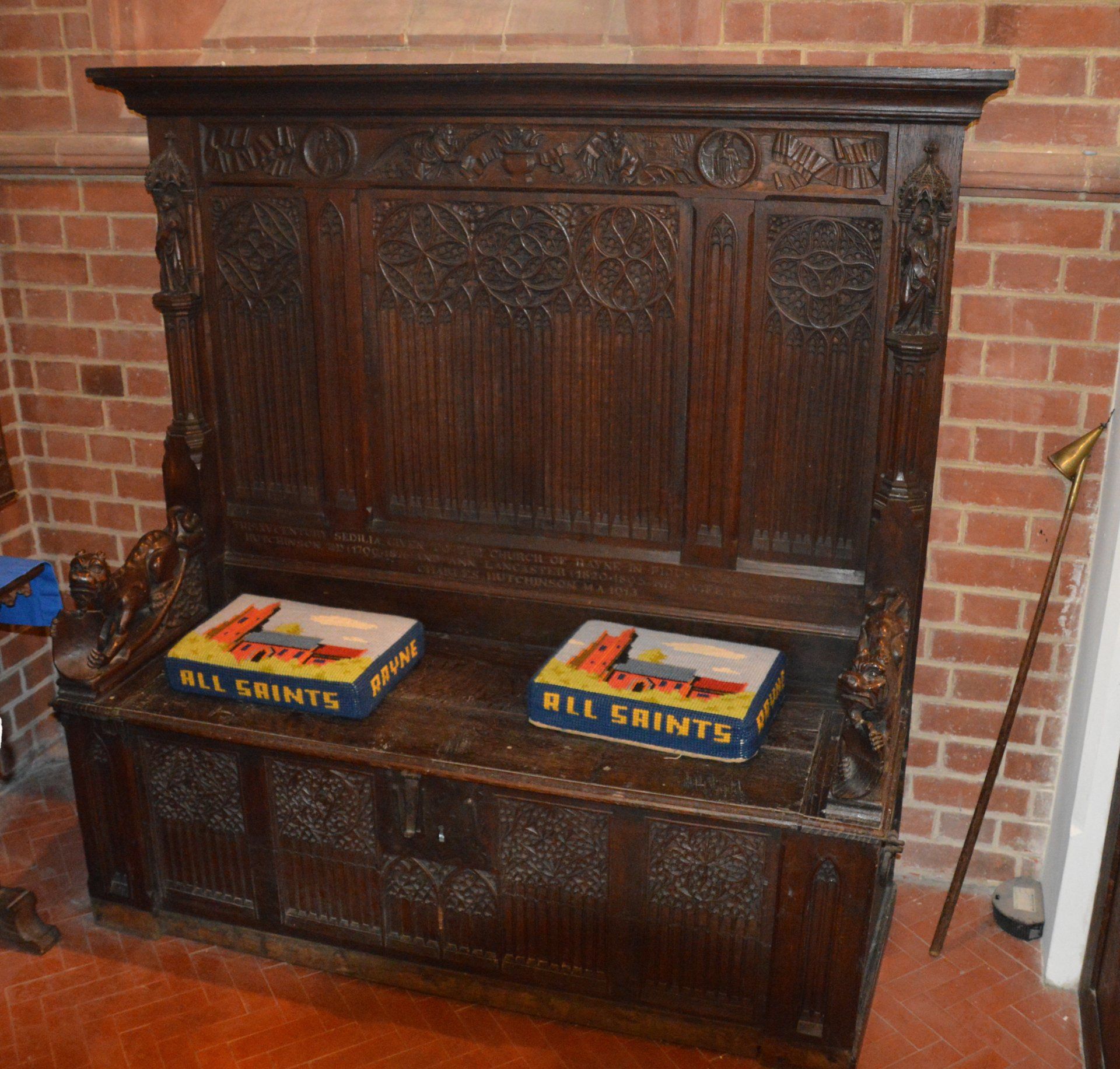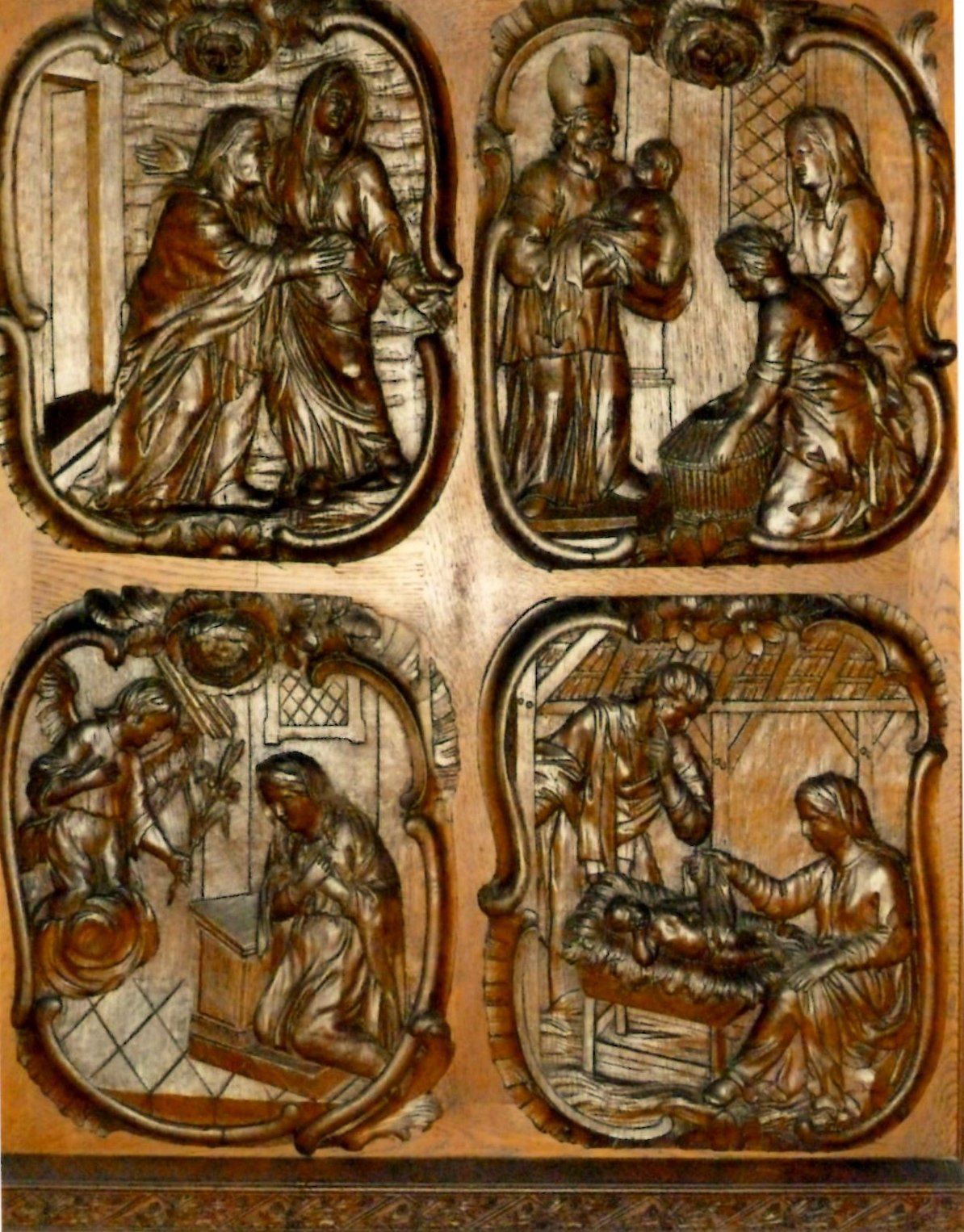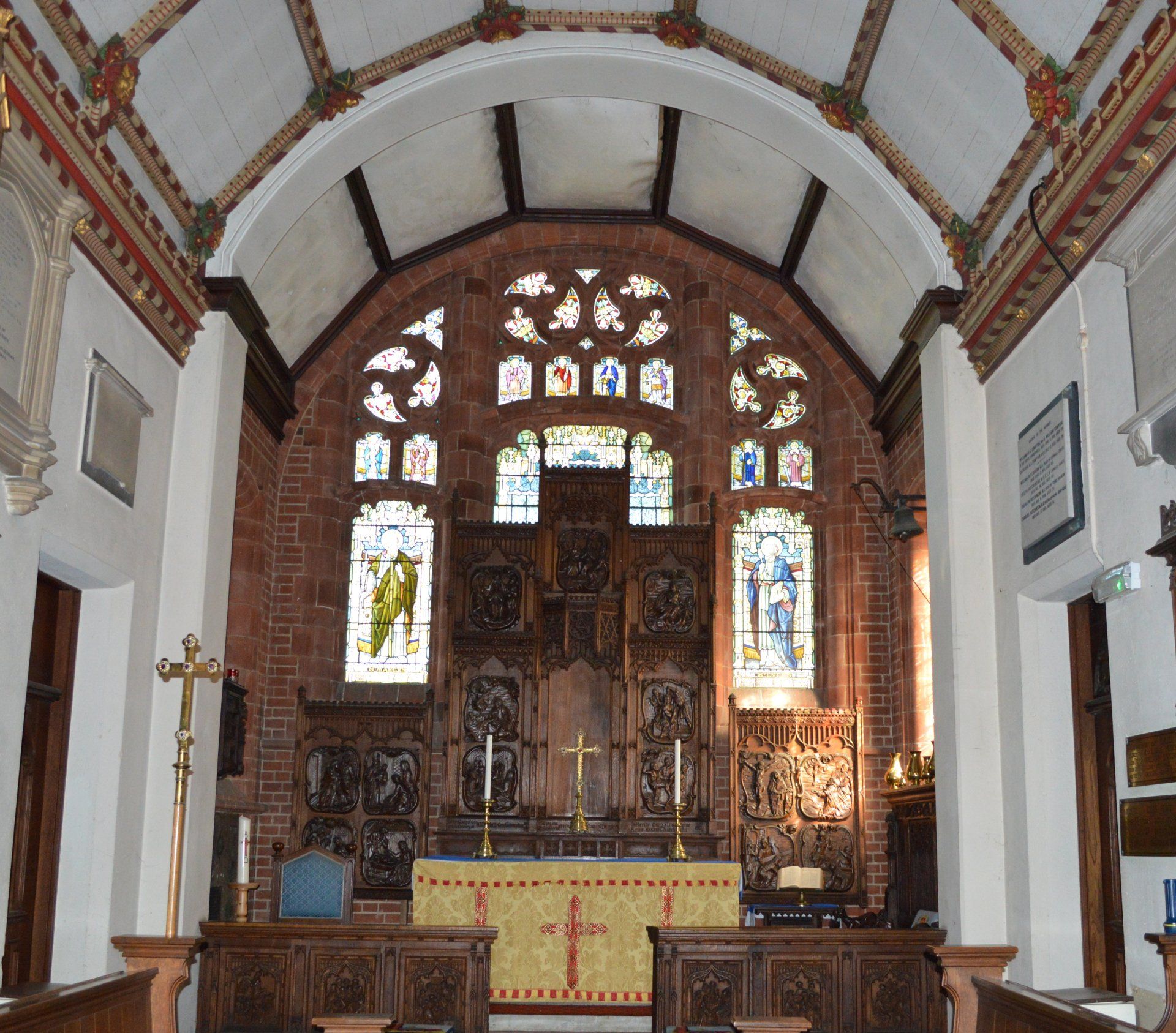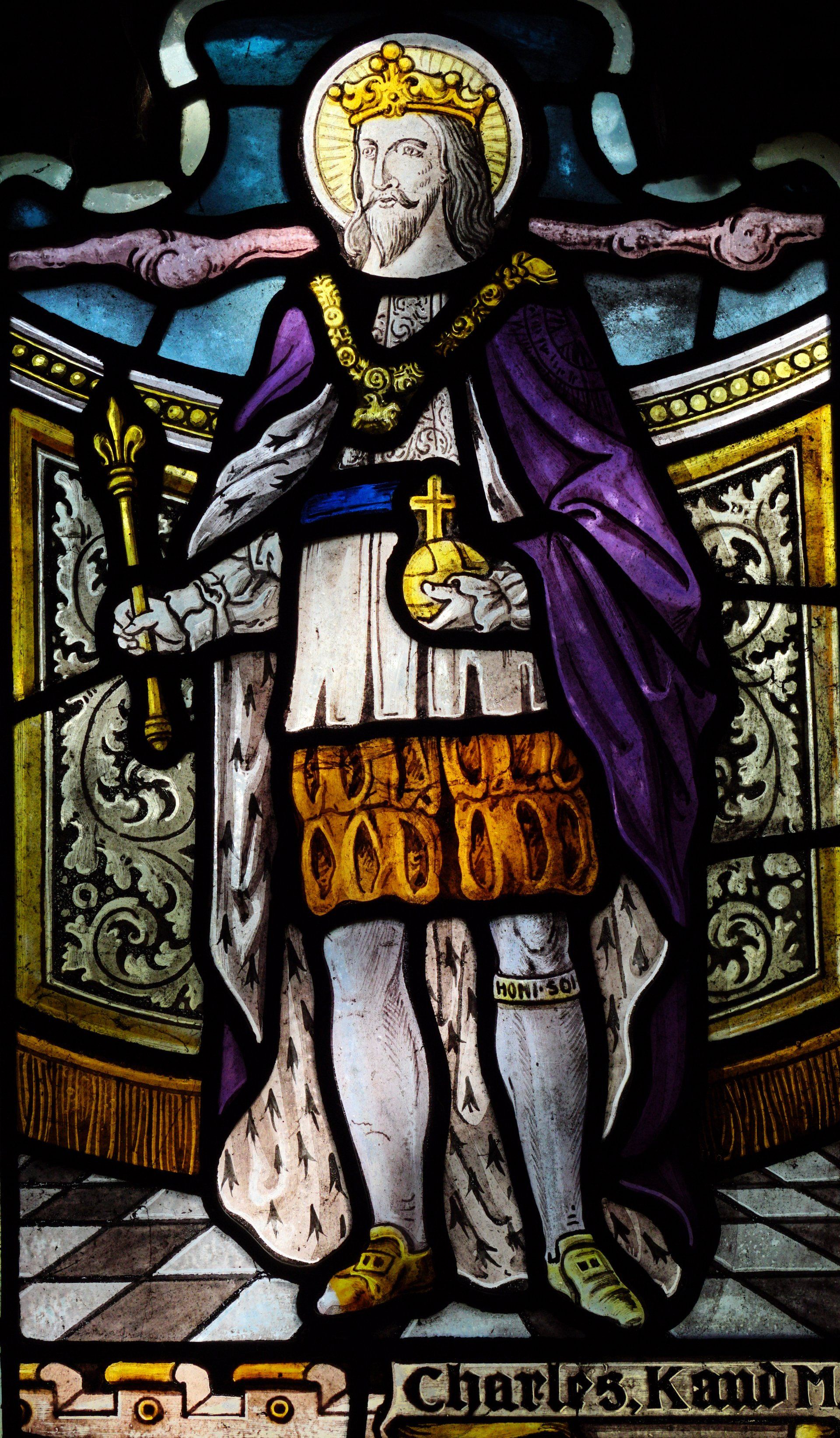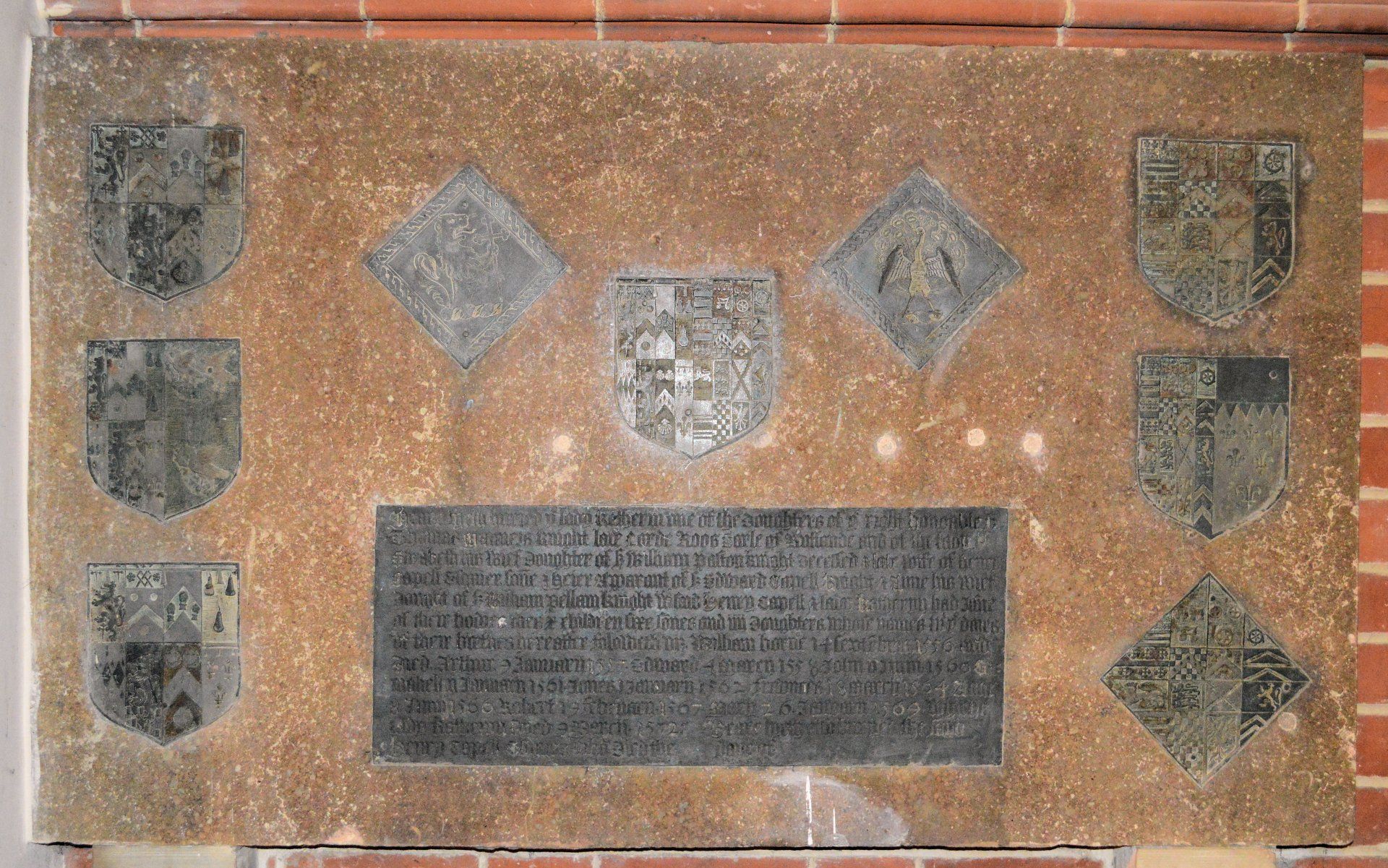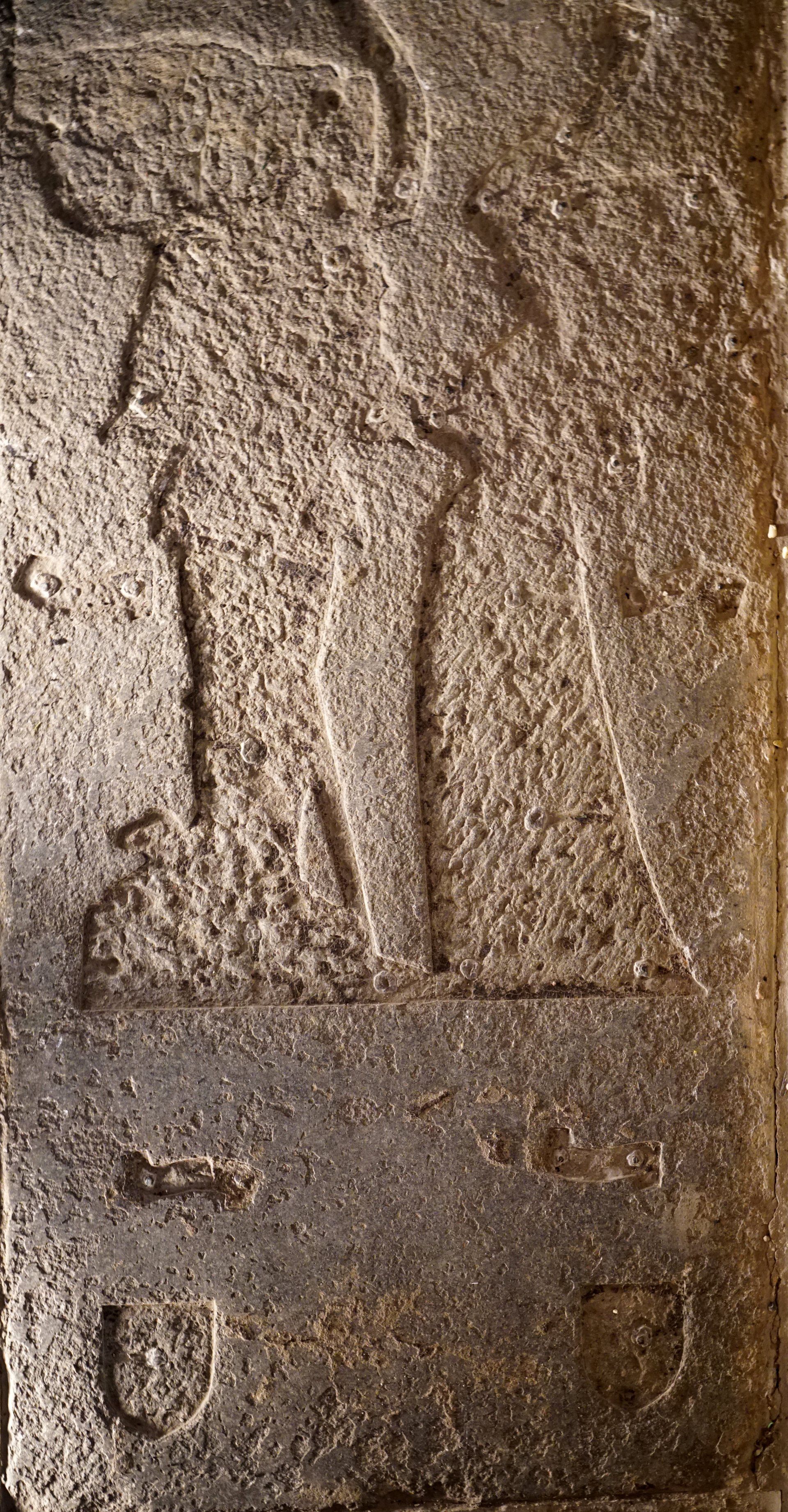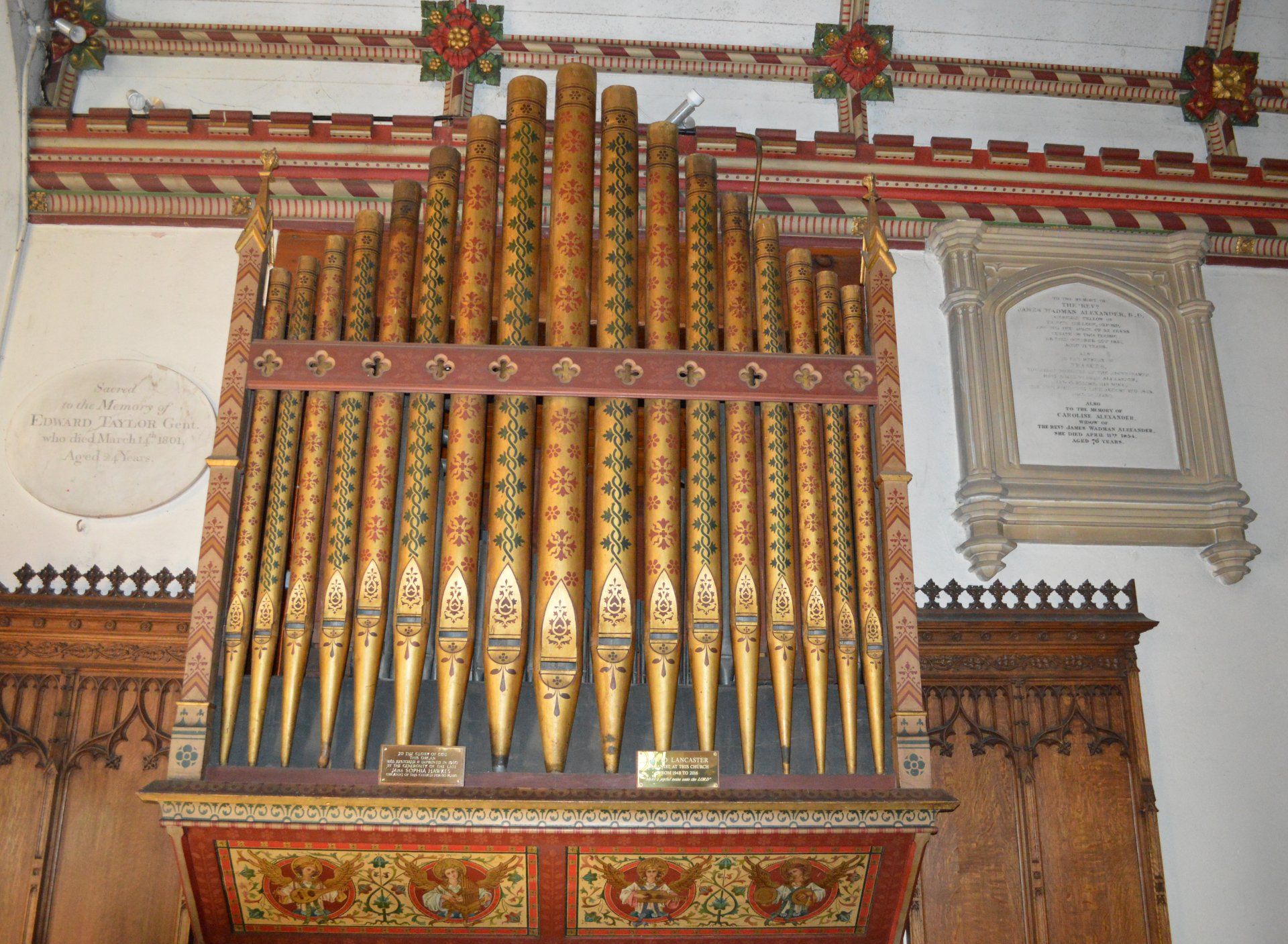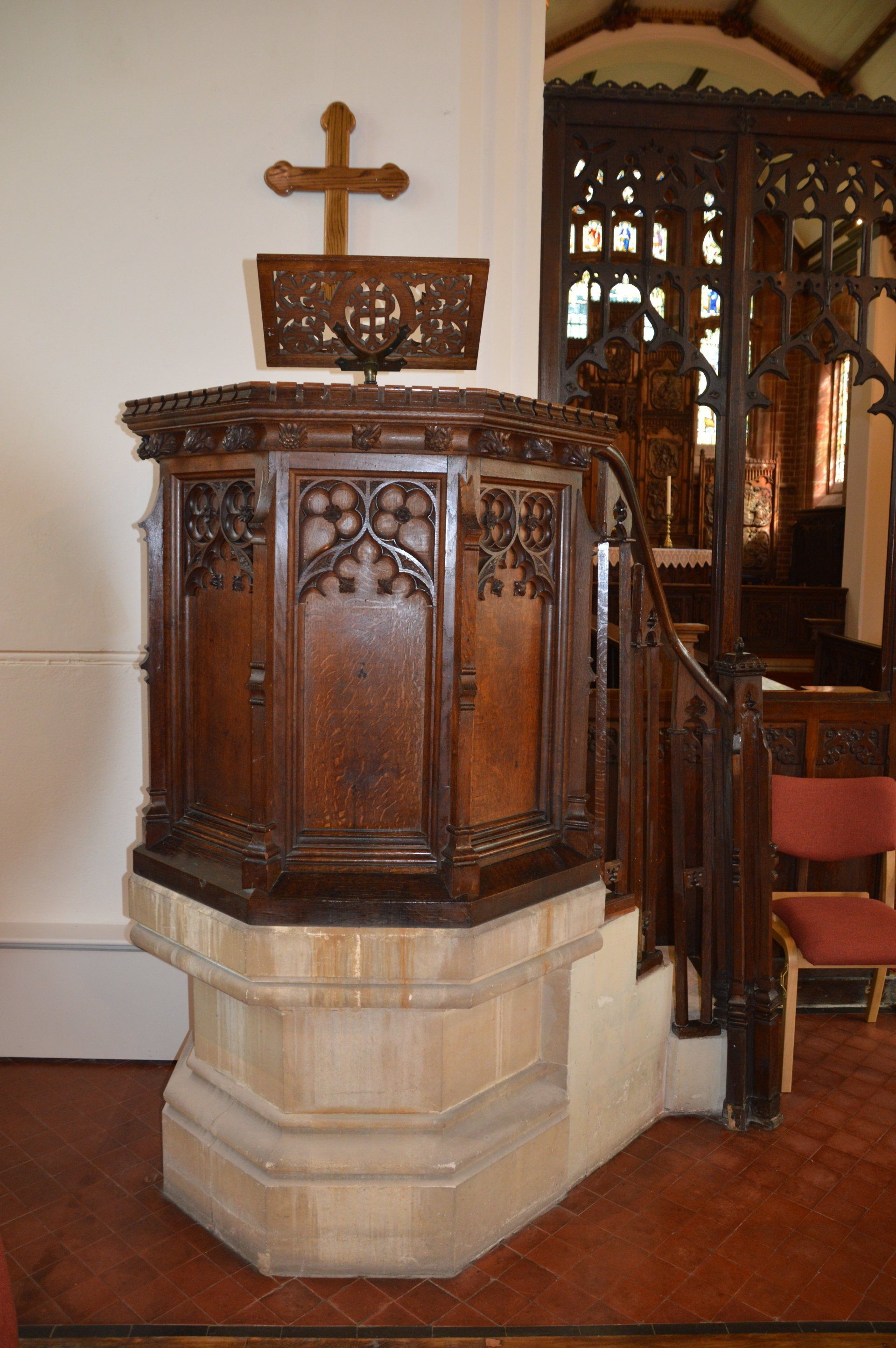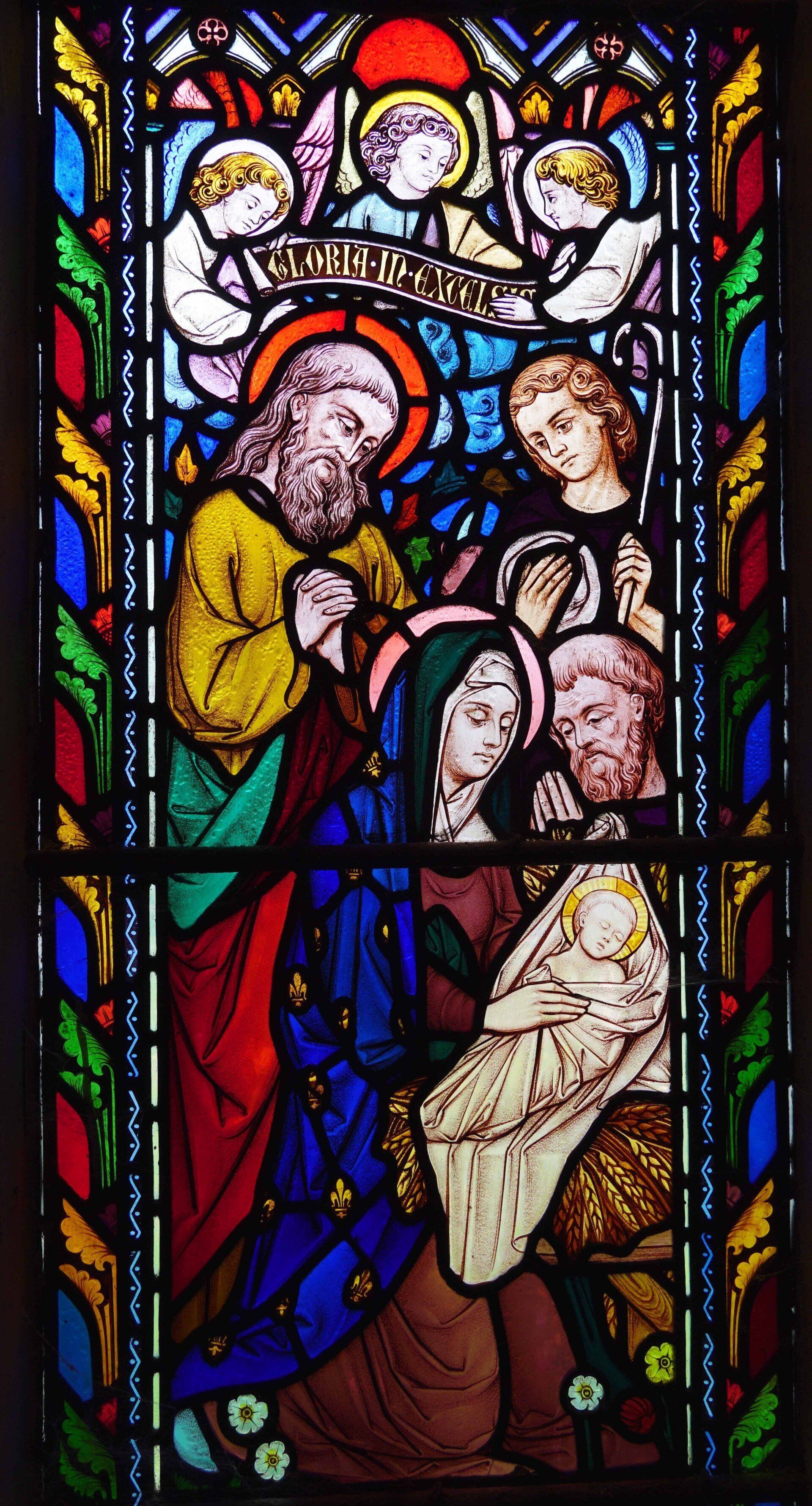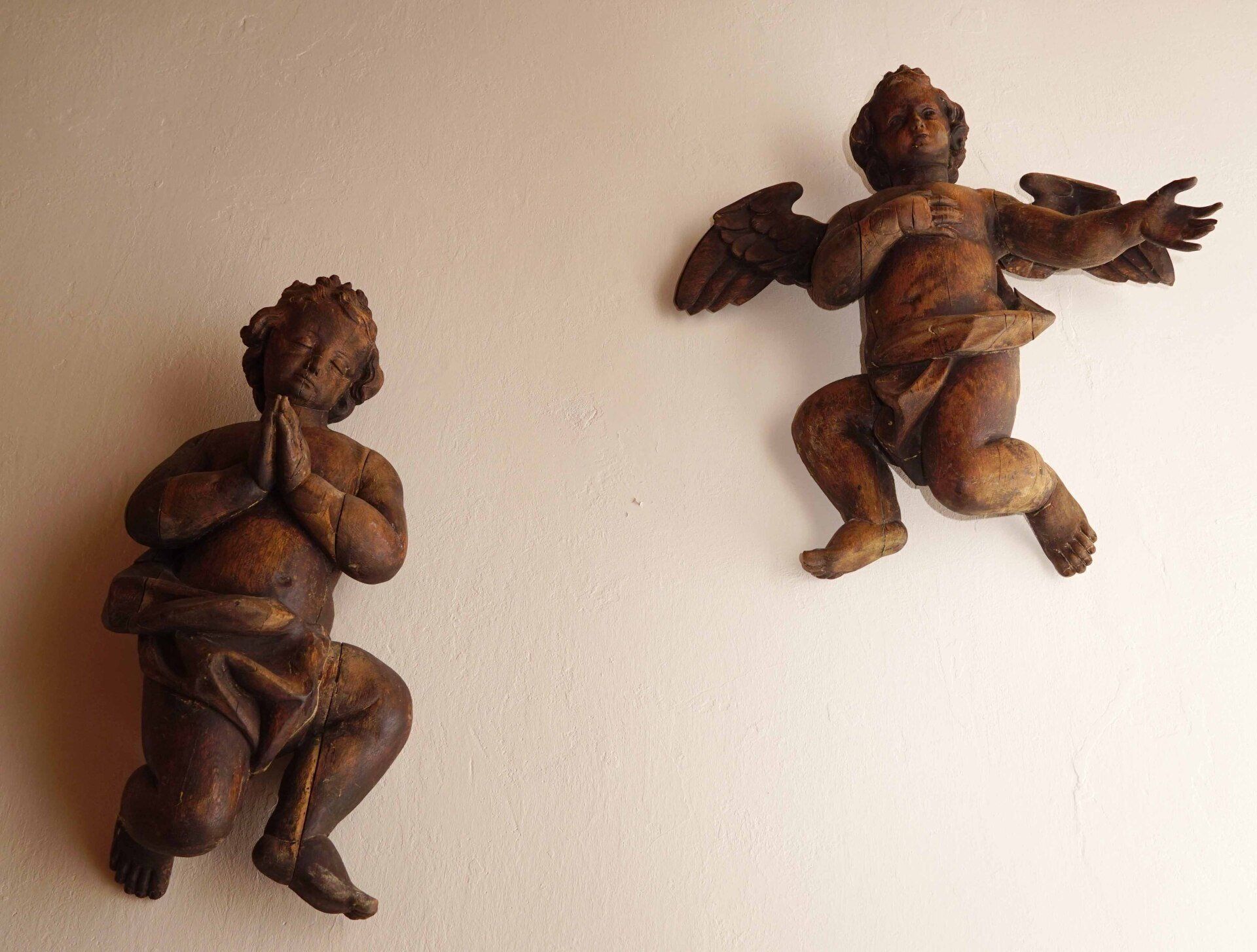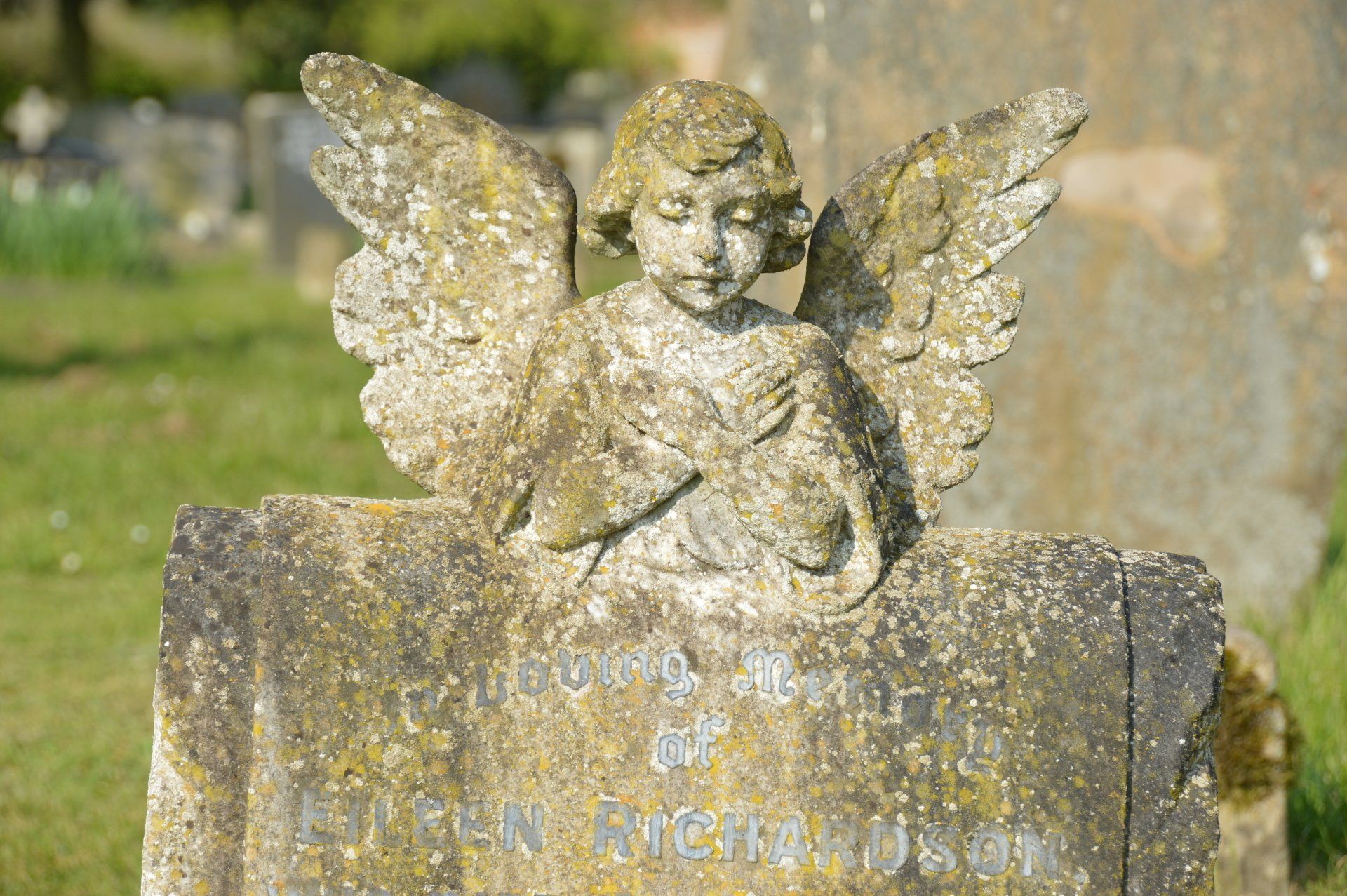
All Saints Church Guide
All Saints church in Rayne stands as a Christian witness to its community. It exemplifies the history of Rayne but it works also to be part of its future in the continuing plan God has for His people. Explore that past and be part of our story.
Title page of Symonds' Vindication of King Charles
12th to 17th Centuries
Nothing is known of the probable Saxon church, as it was replaced in 1199 by Robert de Welles, Lord of the Manor of Rayne Hall, and Harry de Reynes. The nave and chancel were built of flint, with an oak roof. The church was also endowed with a House and Glebe (land used to support a parish priest). It was enhanced when the West Tower was constructed around 1510 by Sir William Capel, during the reign of Henry VIII.
Edward Symonds, M.A., was rector in 1630 and wrote several works including a Vindication of Charles l. Unfortunately Symonds' preaching gave serious offence to his flock. In return they accused him of preaching against the Parliament and obtained the sequestration of his living from the "Committee for Scandalous Ministers." He was spared imprisonment by the testimony of Stephen Marshall, the Rector of Finchingfield, who was Oliver Cromwell's favourite preacher. Symonds died in 1649.
Richard Kidder, 1633-1703, Bishop of Bath and Wells
12th to 17th Centuries
In 1664 Dr Richard Kidder was appointed Rector, but regarded his stay in Rayne as “the lost part of his life” and described the locals as being “factious to the last degree”. The Great Plague reached Rayne in April 1666, with 3 children - Hester, Richard and Sarah Crosier - the first victims. Kidder's wife fell ill but recovered. Fortunately only a few villagers died during this period, compared with 700 in Braintree. Kidder subsequently became the Bishop of Bath and Wells, where he maintained his abrasive approach. He published many of his sermons, including one which influenced the librettist Charles Jennens in writing the words for Handel's "Messiah". Kidder and his wife were killed whilst in bed, when the chimney of the episcopal palace fell on them during the Great Storm of 1703.
All Saints around 1836
18th and 19th Centuries
In 1756 Rev. John Powell found the church and rectory in serious disrepair. Inside the church pews were tumbling down and the pulpit was in a dangerous condition. The doors were hardly capable of shutting. Hogs were roaming the graveyard and disturbing the graves. Powell arranged for the graveyard to be fenced and gated, along with repairs to the church. Despite these efforts, by the 1830s much of the building was beyond repair so it was shut for being unsafe. In 1840/41 the Nave and Chancel were demolished and replaced, at a cost of £1,300. A new foundation stone was laid by the Earl of Essex, with coins of Queen Victoria placed underneath it. The architect was Lewis Vulliamy. However, this only provided a base, with additional improvements required. Their subsequent delivery was due to the stewardship of Rev. W. S. Hemming.
Another significant contribution to Rayne was made in 1844 by Rev. Thomas Willis, the Curate of All Saints, when he purchased the former malthouse owned by John Hance (the Parish Clerk) for £155. This was used as the School Room until the opening of a Victorian school in School Lane on 27 Oct 1879.
All Saints in 2021
20th and 21st Centuries
The Sanctuary and Clergy Vestry were added in 1914. Other notable enhancements were the replacement of oil lamps with electric lights in 1935 and the installation of a toilet in the South Porch in 2002.
A new Rectory was built in 1963, retaining 5 acres of glebe land which was divided into 50 allotment plots for the benefit of the tenants' association. Maintenance work was undertaken in 1975-76 with the roof, windows and gutters being overhauled, the nave and chancel redecorated and the wiring renewed.
The 2020 reordering entailed: repairs to the fabric and redecoration; enhancing the heating system; removal of the pews to provide more flexible seating arrangements; the installation of audio visual facilities and the restoration of the floor. Servery and kitchen facilities are also planned.
All Saints Church Tour
The Risk Assessment for the All Saints Church Tour can be viewed here.
29
30
31
1
2
3
4
5
6
7
8
9
10
11
12
13
14
15
16
17
18
19
20
21
22
23
24
25
26
27
28
29
30
31
1
